The allure of van life is undeniable. It’s the promise of the open road, waking up to a new epic landscape every morning, and the ultimate freedom to chase the sunset. But let’s be real for a second. The Instagram-perfect picture of a serene van lifer sipping coffee with a mountain view doesn’t always show the full story.
What happens when your phone, your only link to maps and communication, dies in the middle of nowhere? Or when you’re craving a cold drink after a long hike, only to find a lukewarm cooler? Or when you need to send that one critical work email from a remote campsite with zero cell bars?
This is where the right technology transforms the dream from a logistical headache into a sustainable reality. The right tech gadgets for van life aren’t about cluttering your tiny space; they’re about unlocking a new level of comfort, safety, and freedom. They are the silent partners that work in the background, making your adventure smoother, safer, and infinitely more enjoyable.
So, buckle up. We’re diving into the 10 essential tech gadgets that will revolutionize your van life experience.
Table of Contents
1. The Portable Power Station: Your Off-Grid Heartbeat
Forget everything else on this list if you don’t have this. A portable power station is the central heart of your entire van’s electrical system. It’s more than just a big battery; it’s a self-contained unit with built-in inverters and multiple ports (AC, DC, USB-A, USB-C) to power everything from your laptop to your lights to your blender.
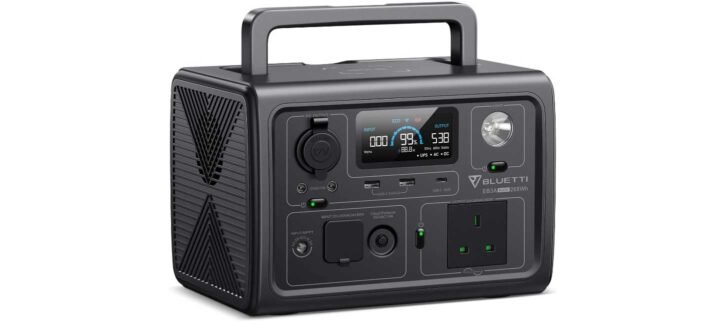
Why It’s a Must-Have: Imagine this: You’ve found the perfect, secluded spot in a national forest. The stars are about to come out. But your laptop is at 3%, your phone is dead, and the lights won’t turn on. This “energy anxiety” is a real thing for van lifers. A portable power station completely eliminates it. It’s the quiet confidence of knowing you have reliable power, wherever you park.
What to Look For:
- Capacity (Watt-hours or Wh): This is the most important spec. A 500Wh station is a good start for charging personal electronics. A 1000Wh-2000Wh station will allow you to run more demanding appliances like a fridge or an induction cooktop.
- Output Ports: Ensure it has the ports you need. A pure sine wave AC inverter is crucial for sensitive electronics like laptops.
- Recharging Options: Look for one that can be recharged via a wall outlet, your van’s 12V socket (while driving), and, most importantly, solar panels.
Popular brands like Jackery, EcoFlow, and Anker dominate this space for a reason. Investing in a quality power station is investing in your freedom.
2. Solar Panels: The Gift of Free, Endless Energy
A power station is great, but it has a finite charge. To truly live off-grid for extended periods, you need a way to replenish that power. Enter solar panels. They are the lungs of your van, constantly breathing in sunlight and converting it into usable energy for your power station.

Why It’s a Must-Have: Solar panels grant you true independence. You are no longer tethered to campgrounds with electrical hookups or forced to drive for hours just to charge your batteries. As long as the sun is out, you are generating your own clean, free electricity. This is the essence of sustainable van life.
What to Look For:
- Type: You have two main choices. Rigid panels are typically mounted permanently on the roof, are more durable, and often more efficient. Flexible or portable panels are lightweight, can be set up and angled towards the sun, and stored away when not in use. Your choice depends on your van build and power needs.
- Wattage: A 100W to 200W setup is a fantastic starting point for keeping a power station topped up and running basic electronics. If you have higher energy demands (like a fridge and work equipment), you’ll want to look at 300W or more.
Pairing solar panels with your power station creates a self-sufficient ecosystem that is the cornerstone of modern van life.
3. Cell Phone Signal Booster: Your Connection to the World
You love getting away from it all… until you really need a connection. Whether it’s for remote work, navigating a tricky backroad, or an emergency call, a reliable cell signal is non-negotiable. Unfortunately, those epic, remote locations are often dead zones.
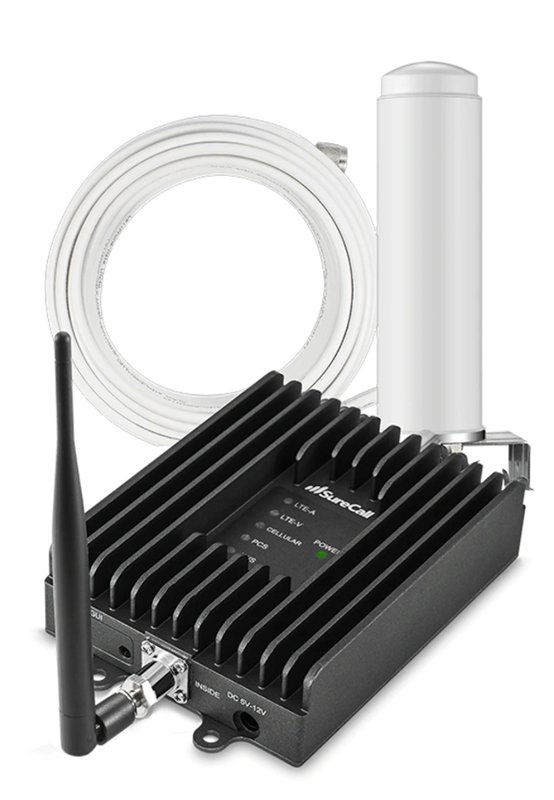
Why It’s a Must-Have: A cell phone signal booster, like those from weBoost, doesn’t create a signal out of thin air. Instead, it captures a weak, existing outside signal, amplifies it significantly, and then broadcasts that stronger signal inside your van. It can be the difference between zero bars and having enough signal to make a call, send a text, or even slowly load a webpage.
What to Look For:
- Carrier Compatibility: Most modern boosters work with all major US carriers (Verizon, AT&T, T-Mobile).
- Gain (dB): This measures the amplification power. The highest gain legally allowed for mobile boosters is +50 dB. Get as close to this as you can.
- Antenna Types: They come with an exterior antenna to catch the signal and an interior antenna to broadcast it. A good quality, high-profile exterior antenna is key.
For the digital nomad or anyone who values safety, this gadget provides invaluable peace of mind.
4. 12V Compressor Fridge/Freezer: The Ultimate Food Game-Changer
Living out of a cooler with constantly melting ice is a drag. It leads to soggy food, daily trips for ice, and wasted money. A 12V compressor fridge is one of the single biggest quality-of-life upgrades you can make in a van.
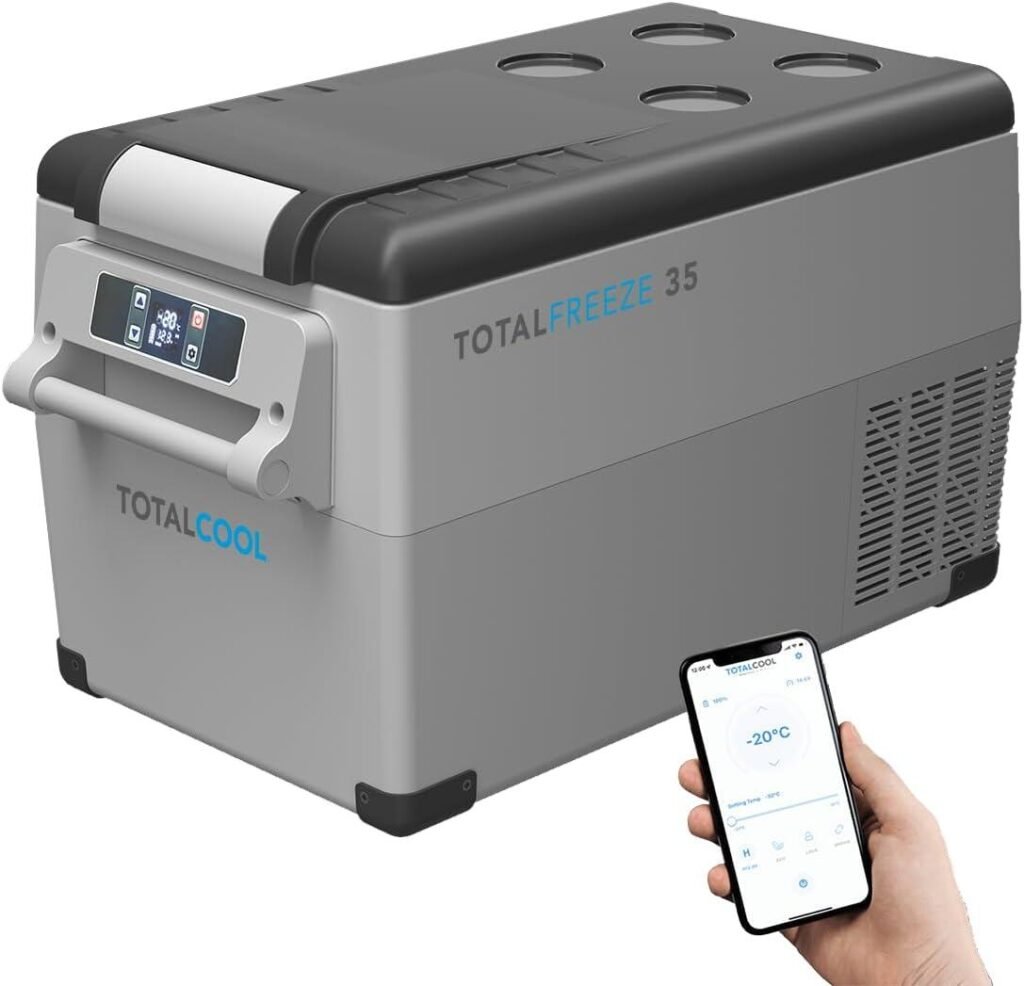
Why It’s a Must-Have: This is your home refrigerator, just smaller and more efficient. It runs directly off your 12V system (your power station), sipping power instead of guzzling it. You can store fresh vegetables, meat, dairy, and most importantly, have ice-cold drinks waiting for you after a long day of exploring. Many models even have a small freezer section for ice cream or frozen meals.
What to Look For:
- Efficiency: This is key. Look at the average power draw in Watts or Amps. Top brands like Dometic and ARB are known for their efficiency.
- Size (Liters or Quarts): Choose a size that fits your space and needs. A 35-45 liter fridge is a popular choice for solo travelers or couples.
- Features: Some have reversible doors, interior LED lights, and Bluetooth apps to monitor temperature and power consumption.
Say goodbye to soggy sandwiches and hello to fresh, real food on the road. It’s a game-changer.
5. Portable Wi-Fi Hotspot: Your Dedicated Office on Wheels
While a cell booster helps with your phone’s signal, a dedicated portable Wi-Fi hotspot is the gold standard for anyone working remotely. These devices are designed for one thing: providing a stable and reliable internet connection for your laptop, tablet, and other devices.
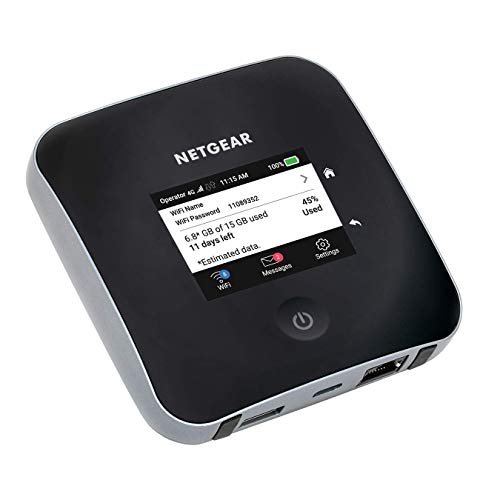
Why It’s a Must-Have: Your phone’s hotspot feature is a great backup, but it drains your phone battery and the connection can be unstable. A dedicated hotspot provides a stronger, more consistent signal, often with the ability to connect multiple devices without a major performance drop. It allows you to create a legitimate mobile office bubble.
What to Look For:
- Data Plan: This is the most critical part. Research plans from carriers like Verizon, AT&T, or T-Mobile. Some offer large or “unlimited” data plans specifically for hotspots. Mobile-centric providers like Starlink for RVs are also becoming a powerful, albeit more expensive, option for true go-anywhere internet.
- Battery Life: A long battery life means you can take it out of the van for a work session at a scenic overlook or a coffee shop.
- 5G Capability: If you frequent areas with 5G coverage, a 5G-capable hotspot will provide blazing-fast speeds.
6. High-Quality Bluetooth Speaker: The Soundtrack to Your Adventure
Life in a van is a cinematic experience, and every movie needs a soundtrack. The tinny speakers on your phone just won’t cut it. A rugged, portable, and high-quality Bluetooth speaker sets the mood, whether you’re cooking dinner, relaxing by a campfire, or listening to a podcast on a rainy day.
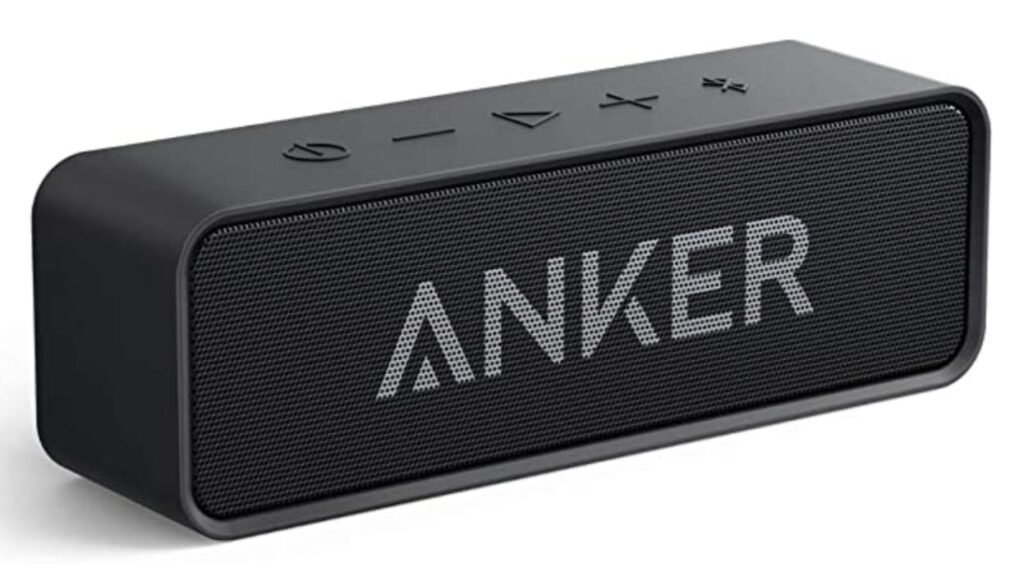
Why It’s a Must-Have: Music and sound have a powerful effect on our mood. A good speaker can make your tiny home feel more spacious and vibrant. It brings entertainment outside the van and can turn a simple evening into a memorable one.
What to Look For:
- Durability: Look for something with an IP rating for water and dust resistance (e.g., IP67). Van life can be messy.
- Battery Life: You want a speaker that can last all day and into the night on a single charge. 12+ hours is a good benchmark.
- Sound Quality: Don’t just look at loudness. Good bass response and clear highs make for a much more pleasant listening experience. Brands like JBL, Ultimate Ears (UE), and Sonos make fantastic portable options.
7. Kindle or E-Reader: A Whole Library in Your Hands
Books are amazing, but they are also heavy and take up a ton of precious space in a van. An e-reader like the Amazon Kindle is the perfect solution for the avid reader on the move.
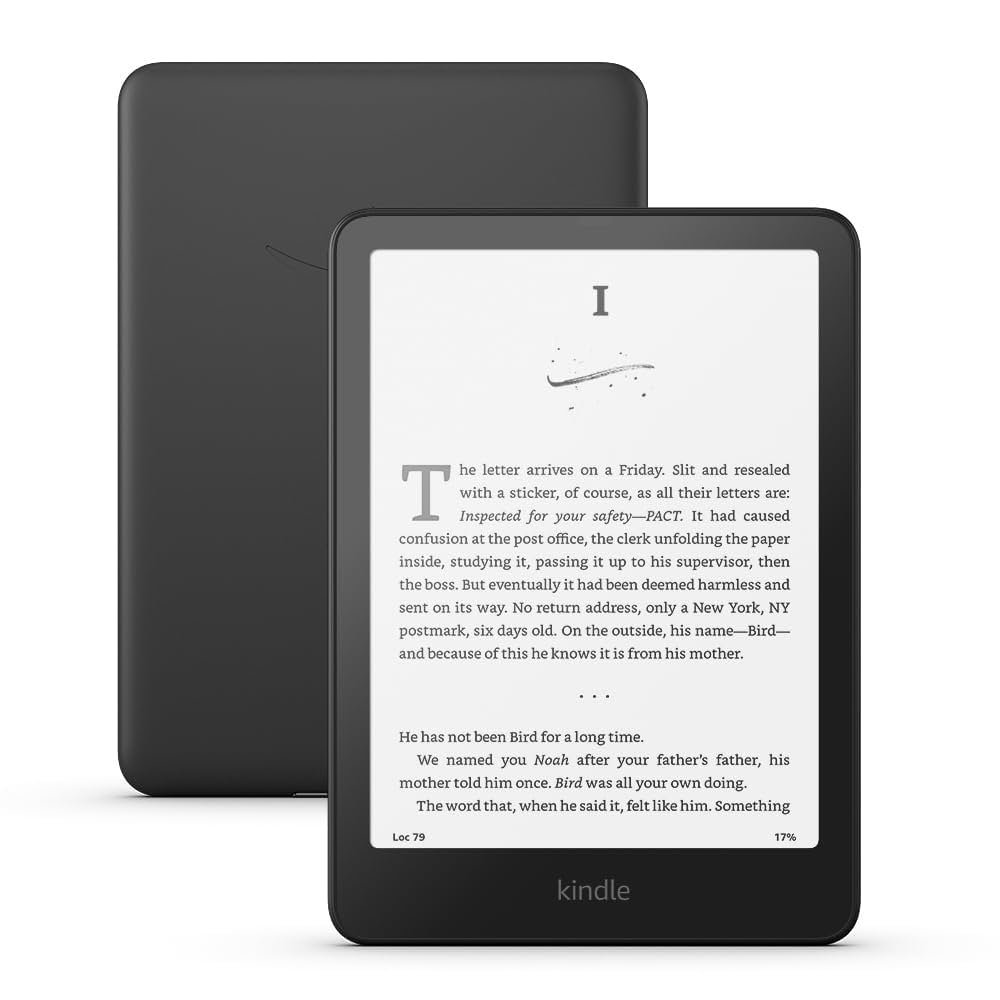
Why It’s a Must-Have: A single, slim tablet can hold thousands of books. The E-ink screens are non-glare and easy on the eyes, making them perfect for reading in bright sunlight or with a headlamp at night. Best of all, their battery life is measured in weeks, not hours, so they barely sip any of your precious power.
Why not just use a tablet? While you can read on an iPad, the backlit LCD screen can cause eye strain and is difficult to see in direct sun. Plus, the endless notifications are a distraction. An e-reader is a dedicated, distraction-free portal to other worlds, which is exactly what you need when you’re unwinding off-grid.
8. GPS Tracker: The Ultimate Peace of Mind
Your van is more than a vehicle; it’s your home. The thought of it being stolen is terrifying. A hidden GPS tracker is an inexpensive piece of tech that provides an immense sense of security.
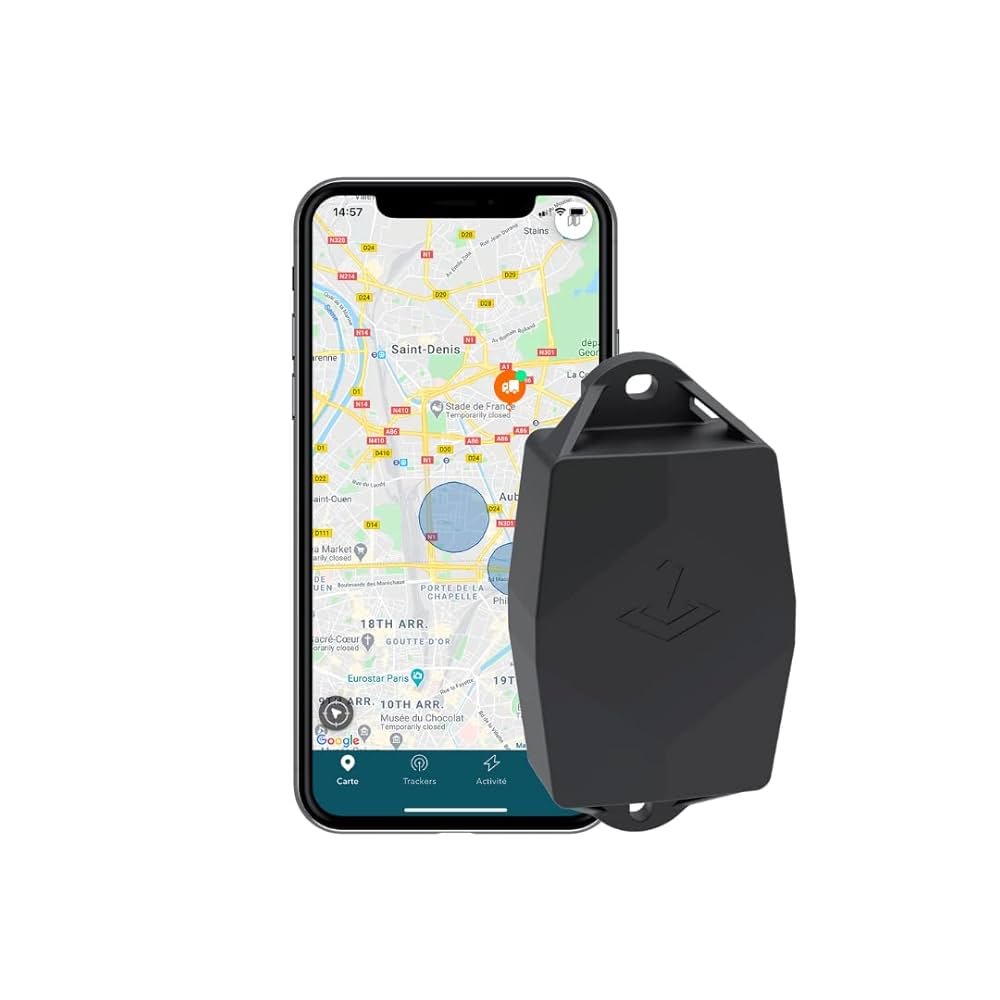
Why It’s a Must-Have: If the worst happens and your van is stolen, a GPS tracker is your best and sometimes only chance of recovery. These small devices are hidden somewhere in your van and use a cellular connection to report their location to an app on your phone in real-time.
What to Look For:
- Subscription Model: Most trackers require a small monthly or annual fee for the cellular service.
- Features: Look for features like “geofencing,” which sends you an alert if your van moves outside of a designated area, and motion alerts.
- Battery: Some are hardwired into your van’s 12V system, while others have their own long-lasting internal battery, giving you more flexibility on where to hide it.
This small investment can save you from a massive loss and the heartache that comes with it.
9. Portable Projector: Your Personal Movie Theater
How do you make a 70-square-foot space feel like a cinema? With a portable projector. After a long day of hiking, there’s nothing better than curling up and watching a movie on a big screen.
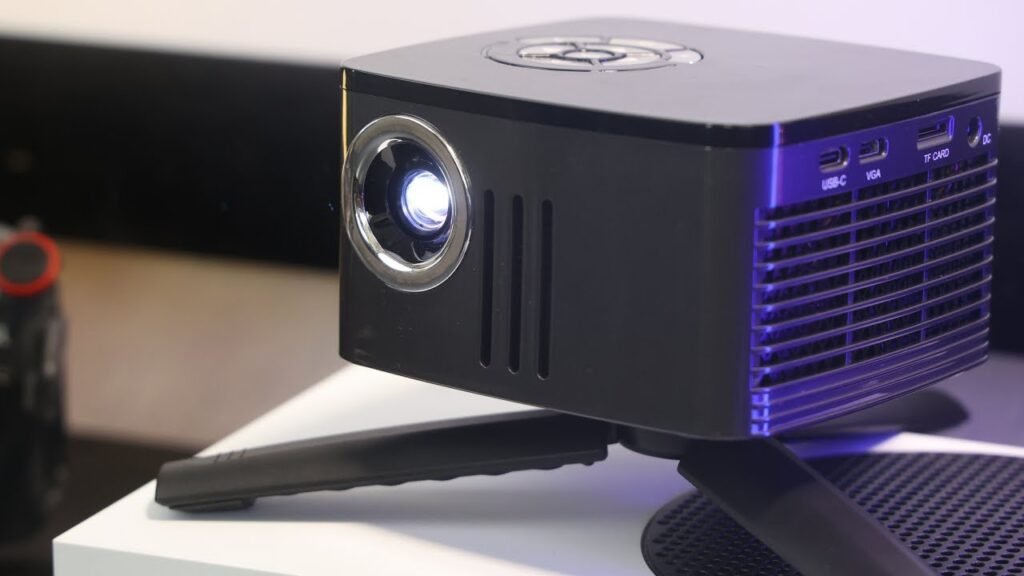
Why It’s a Must-Have: It’s pure magic. A portable projector can turn any blank surface—the side of your van, a sheet hung between trees, or an inside wall—into a massive screen. It creates a special event out of a simple movie night and is an amazing way to entertain friends you meet on the road.
What to Look For:
- Brightness (Lumens): For van use, where you can control the ambient light, 200-500 ANSI lumens is plenty.
- Built-in Battery & Speakers: A truly portable projector, like the Anker Nebula Capsule series, has these built-in, making setup a breeze.
- Connectivity: Look for HDMI and USB ports, as well as wireless casting capabilities (Wi-Fi/Bluetooth) to stream content from your phone or laptop.
10. A Solid Headlamp: The Unsung Hero of Van Life
This might seem low-tech compared to the rest of the list, but a modern, high-quality LED headlamp is an absolute, non-negotiable piece of gear. It’s the gadget you’ll probably use every single day.

Why It’s a Must-Have: Van life involves a lot of fumbling in the dark. Whether you’re navigating to a remote outhouse, checking a weird noise under the hood, cooking after sunset, or trying to find something in a deep cabinet, you need both of your hands free. A phone flashlight just doesn’t cut it.
What to Look For:
- Rechargeable: A USB-rechargeable headlamp is ideal for van life, as you can easily top it up with your power station.
- Red Light Mode: A red light setting preserves your night vision and is less jarring for you and your camp neighbors. It’s a critical feature.
- Brightness & Beam Options: Look for adjustable brightness levels and the ability to switch between a wide floodlight (for up-close tasks) and a focused spotlight (for seeing further down a trail). Brands like Petzl and Black Diamond are the gold standard for a reason.
Frequently Asked Questions (FAQ)
We get it, decking out a van with tech can bring up a lot of questions. Here are answers to some of the most common ones we hear from the van life community.
Q: Do I really need all 10 of these gadgets to start van life?
A: Absolutely not! Think of this as the “ultimate” list, not a “day one” shopping list. Van life is a journey, and your gear can evolve with you. If you’re just starting, focus on the absolute essentials that cover your power and safety needs. Start small, see what you miss on your first few trips, and add gear intentionally as you discover what’s most important for your travel style.
Q: I’m on a tight budget. What are the top 2-3 things I should prioritize first?
A: Excellent question. Prioritize the foundation of your entire setup: power.
- A Portable Power Station: This is your #1 priority. Without reliable power, most other tech is useless.
- A Way to Recharge It: Initially, this can simply be your van’s 12V cigarette lighter port, which charges the station while you drive. If you plan to stay put for more than a day or two, your next purchase should be Portable Solar Panels.
- A Good Headlamp: It’s an inexpensive but invaluable tool for safety and convenience that you will use every single day.
Q: How do I figure out how much power I need? How do I choose the right size power station?
A: This is crucial! You can do a simple “energy audit.”
- List: Make a list of every electronic device you plan to use (laptop, phone, fridge, lights, etc.).
- Find Wattage: Find the power consumption in Watts (W) for each device. This is usually printed on the charger or the device itself.
- Estimate Hours: Estimate how many hours per day you’ll use each device.
- Calculate: For each device, multiply its wattage by the hours of use to get Watt-hours (Wh).
- Add It Up: Sum the Watt-hours for all your devices to get your total daily energy need.
Always buy a power station with a capacity at least 20-25% larger than your daily need to give yourself a buffer.
Q: What’s the real difference between a cell booster and a portable Wi-Fi hotspot? Do I need both?
A: This is a common point of confusion. Here’s a simple way to think about it:
- A Cell Booster is like a megaphone for a weak signal that already exists. It takes a 1-bar signal and makes it a 3 or 4-bar signal for your existing phone and carrier. It doesn’t create internet; it improves your phone’s ability to connect.
- A Portable Hotspot is a dedicated device with its own SIM card and data plan that creates a Wi-Fi network in your van.
If you just need to make calls and send texts in fringe areas, a booster is perfect. If you are a digital nomad who needs a reliable, strong internet connection for a laptop, a dedicated hotspot is essential. Many remote workers use both to maximize their chances of staying connected.
Q: This sounds expensive. Are there budget-friendly alternatives to this gear?
A: Yes! Van life is about ingenuity. You can absolutely save money by:
- Buying Used: Check marketplaces for used power stations, fridges, and solar panels from other van lifers who are upgrading.
- Looking for Sales: Keep an eye out for major sales events like Black Friday or Amazon Prime Day.
- Starting Smaller: You don’t need the 2000Wh power station on day one. Start with a 500Wh model and see if it meets your needs.
- Prioritizing: Instead of a fancy projector, use a tablet. Instead of a Wi-Fi hotspot, start by using your phone’s hotspot feature. You can always upgrade later.
Q: Doesn’t adding all this tech defeat the purpose of “getting away from it all”?
A: It’s all about your mindset. Tech shouldn’t be a distraction; it should be a tool that enables more freedom. A solar panel setup doesn’t ruin your connection with nature—it allows you to stay in nature longer without having to drive to a city to recharge. A GPS tracker doesn’t make you less free—it gives you the peace of mind to leave your home-on-wheels at a trailhead and explore without worry. The goal is to use tech to handle the logistics so you can be more present in your adventure.
Gear Up for Your Best Adventure
Living in a van is about embracing simplicity, but that doesn’t mean you have to forgo the comfort, security, and connectivity that modern technology offers. The right tech gadgets for van life are enablers. They empower you to stay on the road longer, work from more beautiful places, and solve the small, everyday problems that can wear you down.
From the foundational power of a solar-charged generator to the simple, hands-free convenience of a headlamp, each piece of gear on this list serves a purpose: to make your life on the road better. They are the investments that pay you back every single day in the form of cold drinks, safe passage, connection to loved ones, and epic movie nights under the stars.
So, as you plan your build or look to upgrade your current setup, think of this list as your roadmap to a smarter, more capable rig.
Now it’s your turn. What is the one piece of tech you absolutely can’t live without in your van? Is there a gadget we missed that has been a total game-changer for you? Drop a comment below! We read every single one and would love to hear from our community on the road. Subscribe to MindGearMen.


